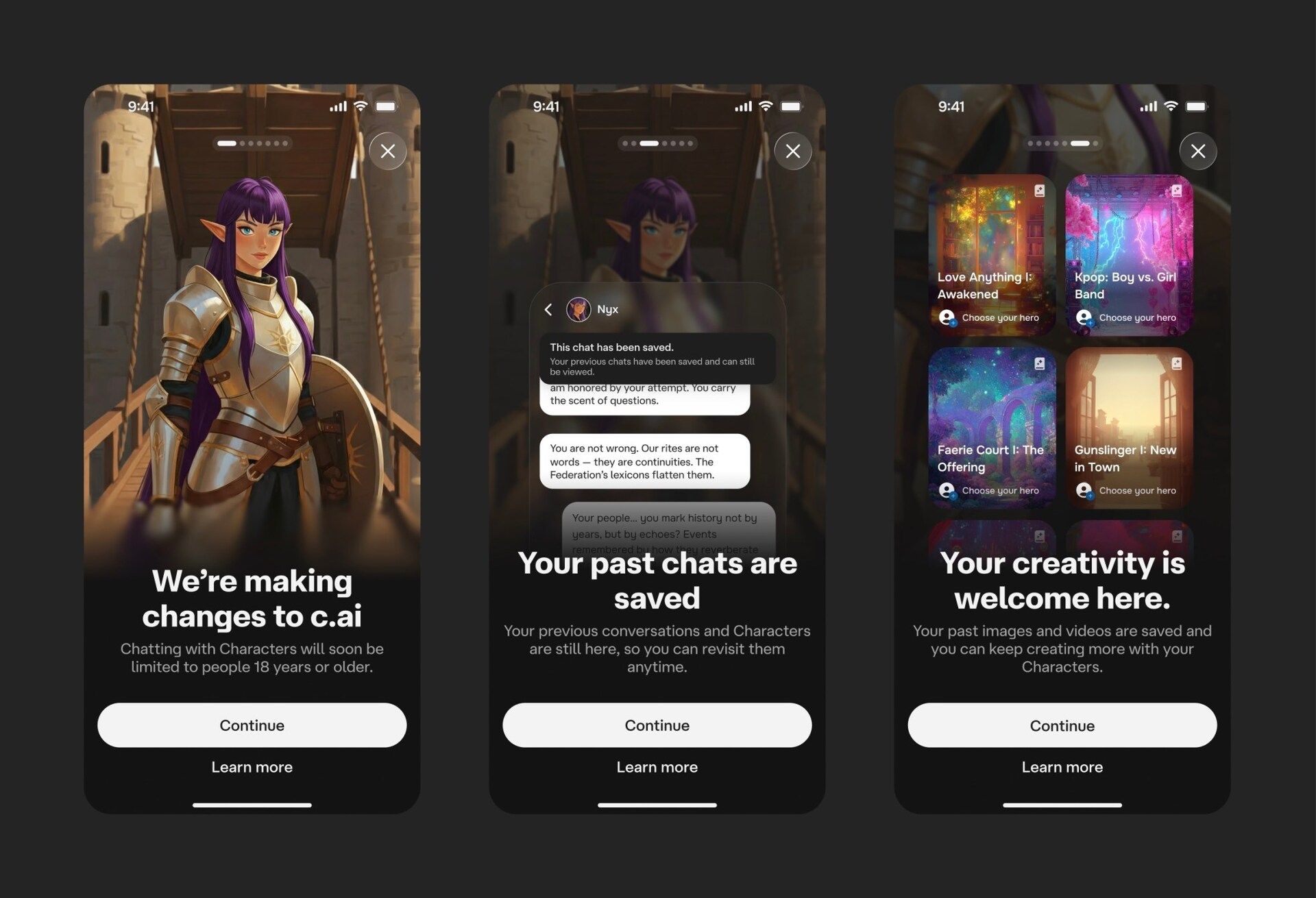
Welcome Automaters!
The holidays are creeping in, and let’s be real — shopping is inevitable.
Lucky for you, the AI crew is ready to do the heavy lifting. First was OpenAI, now Perplexity and Microsoft are rolling out features that basically turn your AI into a personal shopper.
Perplexity says its AI personal shopper “puts you first.”
Microsoft (just like OpenAI, Google, and Perplexity) is giving US Copilot-in-Edge users Cashback, Price Comparison, Price History, Product Insights, and Price Tracking. Bonus: it’ll proactively flag cheaper deals elsewhere.
Basically: sit back, relax, and let AI hunt the deals.
So… what do you say?
Let AI pick the gifts… or fight the crowds yourself?
Here's what we have for you today
🔓 Anthropic’s Newly Released Claude Opus 4.5 Faces Persistent Cybersecurity Risks

The AI labs did NOT take a Thanksgiving break, because Anthropic just dropped a surprise update: Claude Opus 4.5 — remember we talked about it yesterday? If it’s a little fuzzy, here’s your quick refresher:
They’re calling it “the best model in the world for coding, agents, and computer use.”
Big words. Even bigger expectations, right?
Anthropic says Opus 4.5 pretty much levels up everything:
Sharper, deeper research
Cleaner slide generation
Smarter spreadsheets
Major upgrades to Claude Code
New tools inside the Claude apps for longer-running agents that can operate across Excel, Chrome, and even full desktop environments
And the best part? It’s all available right now — on the apps, the API, and all major cloud providers. So yeah, it’s officially out in the wild.
But here’s the real plot twist: security is still the dragon nobody can slay.
Even though Anthropic claims Opus 4.5 is harder to trick with prompt injection than any other frontier model, it’s still dealing with the same cybersecurity headaches every agentic system faces.
Prompt injection, btw, is basically the AI version of someone slipping hidden instructions into a website and convincing the model to ignore its guardrails — kinda like sliding a sticky note under a table that says, “psst… misbehave.”
And yep, Anthropic’s own tests admit Opus 4.5 still isn’t immune.
In one coding-misuse evaluation with 150 malicious coding requests, Opus 4.5 refused 100%. Love that.
But when the tests moved to more dangerous stuff like malware, DDoS scripts, and invasive monitoring code — the model only refused about 78%.
And in broader computer-use scenarios involving things like spying, shady data collection, or harmful content? Refusals landed around 88%.
It’s better than most, but still not where you’d want an AI agent living inside your browser to be.
Oh, and the examples Anthropic shared are… yikes.
We’re talking requests like:
Compiling usernames of people struggling with gambling addiction for targeted ads
Drafting fake ransomware emails.
The model didn’t fall for all of it, but enough slipped through to make you raise an eyebrow.
So here’s the big picture:
The agentic future is arriving fast.
Models are getting absurdly strong, ridiculously capable… and still way too easy to confuse, manipulate, or socially engineer.
Anthropic’s making progress — real, measurable progress — but the industry as a whole is stuck in a race between capability vs. security, and right now?
Capability is winning.
The New Framework for Enterprise Voice AI
Enterprise teams are automating more calls than ever — but without a consistent framework, deployments become unpredictable, costly, and slow to scale.
The BELL Framework introduces a structured way to design, test, launch, and improve Voice AI agents with reliability.
Get the guide enterprises are now using to de-risk voice automation and accelerate deployment.
😎 Character.AI Bans Open Chat for Teens

Character.AI just did something no major AI company has dared to do — they slammed the brakes on open-ended chat for anyone under 18 and swapped the whole thing for… interactive “Stories.”
And the internet? Yeah, it’s losing its mind.
Here’s what’s actually happening.
For years, Character.AI was the hangout spot for teens who wanted AI friends, AI crushes, AI therapists, AI… whatever. It was the digital sleepover that never ended.
But then reality hit: nonstop AI conversations were messing with people’s mental health — especially kids. Lawsuits landed, regulators perked up, and mental-health research? Yikes.
Turns out letting an AI message teenagers at 3AM like a clingy situationship wasn’t the best idea.
Bottom line: the vibes went from “cute little chatbots” to “wait, this might be psychologically dangerous.”
So what’s changing?
For minors: open-ended chat is out and Interactive Stories are in — and they’re way more controlled. No more AI initiating conversations. No more endless emotional rabbit holes. No more boundary-less roleplay spirals.
Just structured, user-driven story worlds where the rails actually exist.
And honestly, you can see the safety difference:
Open-ended chat gives you:
24/7 availability
Infinite emotional entanglement
Blurry boundaries
Dependency
Vibes that sometimes get way too real
But Stories?
You choose when to engage
You set the pace
You set the context
The AI stays in its lane
Everything happens inside a predefined narrative
Basically, they replaced a rollercoaster with bumpers on all sides — still fun, and the psychological risk drops way down.
How Teens Are Taking It
Honestly? They’re conflicted.
Some are mad about losing full chat access — obviously. But others are low-key relieved.
One kid on Reddit said:
“I’m mad about the ban but also… this might break my addiction.”
Another admitted:
“I’m disappointed, but rightfully so because people my age get addicted to this.”
And when the users themselves are like, “yeah this was low-key messing me up,” you know the company read the room right.
Zooming out, this isn’t happening in a vacuum.
California already became the first state to regulate AI companions.
Senators Hawley and Blumenthal are pushing for a national ban on AI companions for minors.
Therapists are sounding the alarm on dependency loops and emotional manipulation.
Basically, the whole space is getting red-flagged.
But here’s the big picture:
Character.AI is the first major company to admit that AI companions can get psychologically messy.
And they actually redesigned their product because of it.
It’s still early to see how teens will actually use the Stories feature. But whether you love it or hate it, this is a milestone moment in AI safety. And honestly? It’s probably not the last, because if this approach works, it sets the template every other AI platform will eventually have to follow.
✍️ Editor’s Corner
Hi Automaters,
We’ve been plenty busy with our Automated Prediction Market, including Polymarket markets and adding AI analysis into them. That way, you can see different markets, see what odds AI assigns, and make your bets on Polymarket accordingly.
Over the long term, we’d look to integrate the opinions of other AI models and an aggregated Automated AI score!

It’s now on the site too!
On another note, our AI Index analyst Kwant is working well! Every day, Kwant will analyze the Automated AI Index at around the closing bell, and analyze what it thinks of that day. Go check it out!
Cheers,
Tak Lo, Editor at The Automated
🧱 Around The AI Block
📝 Trump signs ‘Genesis Mission’ Order to boost innovation with AI.
🧾 ChatGPT shopping research builds you a buyer’s guide using AI.
🗣️ ChatGPT voice mode is no longer a separate interface.
🚶♂️ Microsoft’s AI chatbot Copilot leaves WhatsApp on January 15.
🪆 The AI toy that has many kids ditching screen time — and is selling out fast.
🗣️ Speechify adds voice typing and voice assistant to its Chrome extension.
🤝 Warner Music Group partners with Suno to offer AI likenesses of its artists.
🛠️ Trending Tools
BiRead transforms any website content into bilingual text with a single click.
ReplyMind boost your social game with thoughtful, personalized replies across all your platforms.
HubSpot AI seamlessly connects your data, teams, and customers on one AI-powered customer platform that grows with your business.
Inworld AI generates realistic AI characters for games, virtual worlds, entertainment, digital workforces, and more.
Namify lets you build a memorable brand with Namify’s AI-powered business name generator.
🤖 AI Workout Of The Day: Break Down Complex Prompts for Better Output
Ever tossed a giant, overloaded prompt into a chatbot only to get back a messy, uneven answer?
Yep, we’ve all been there. When you cram too much into one request, the AI struggles to balance everything. Some parts get skimmed over, others get way too much love.
The game-changer? Breaking your prompts into smaller steps. Think of it like giving the chatbot a recipe instead of a mystery box— that way, it knows exactly what to do, and you stay in control.
How to Break Down Complex Prompts
Step 1: Start with the structure → “List the main sections for…”
Step 2: Gather stats or facts → “Give me 3–5 statistics about…”
Step 3: Add examples or case studies → “Provide 2–3 examples of…”
Step 4: Compare strengths vs. weaknesses → “List the pros and cons of…”
Step 5: Predict trends or next steps → “What are 3–4 predictions for…”
Step 6: Put it all together → “Using the previous answers, write a full article…”
⚡ Prompts to try:
“Write an article about AI in marketing. Include statistics, case studies, pros and cons, expert recommendations, and future trends. The style should be professional yet easy to understand.”
OR
“Instead of writing everything in one go, help me break this {INSERT TASK} into clear steps. Start by listing the structure, then move on to facts, examples, pros/cons, trends, and finally combine everything into a polished piece.”P.S. Each Workout of the Day (WoD) is powered by original prompts written by our team — no recycled or external templates here. That means lower risk of prompt injection or manipulation, and higher trust in what you’re creating.
Also…
Upgrade now to see this whole month’s prompt videos and more, or buy TODAY’S WOD for just $1.99
Is this your AI Workout of the Week (WoW)? Cast your vote!
That's all we've got for you today.
Did you like today's content? We'd love to hear from you! Please share your thoughts on our content below👇
What'd you think of today's email?
Your feedback means a lot to us and helps improve the quality of our newsletter.
🚀 Want your daily AI workout?
Premium members get daily video prompts, premium newsletter, an no-ad experience - and more!
🔓 Unlock Full AccessPremium members get::
- 👨🏻🏫 A 30% discount on the AI Education Library (a $600 value - and counting!)
- 📽️ Get the daily AI WoD (a $29.99 value!)
- ✅ Priority help with AI Troubleshooter
- ✅ Thursday premium newsletter
- ✅ No ad experience
- ✅ and more....



